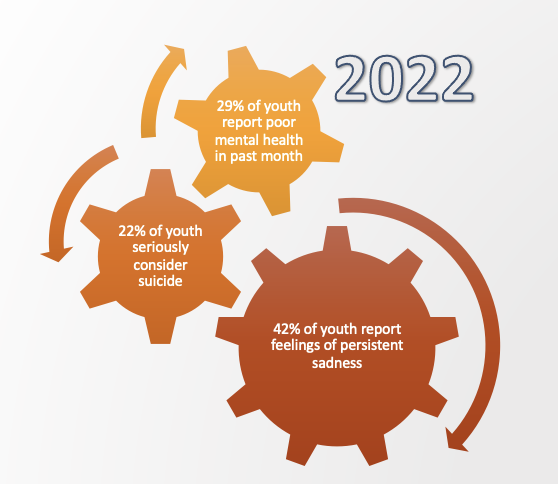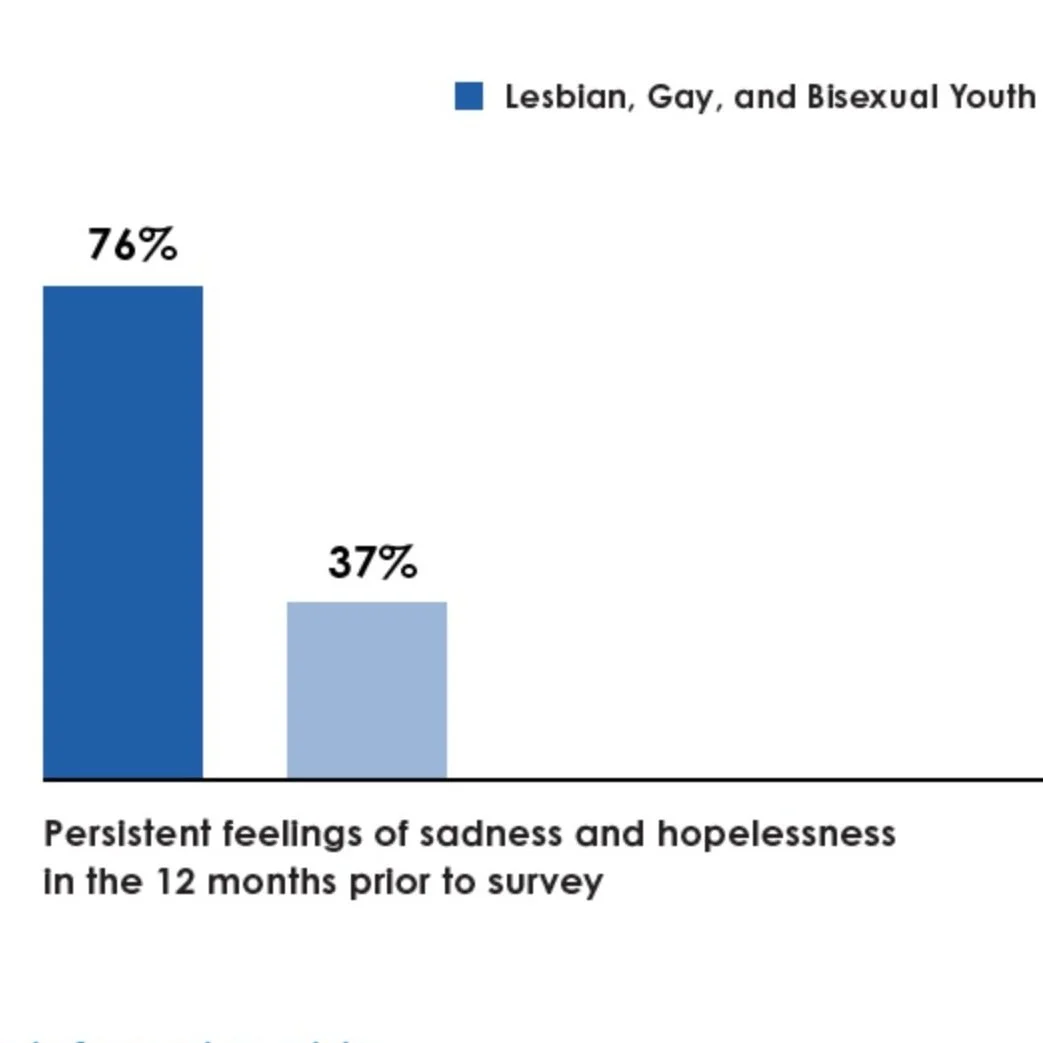The “most serious problem regarding children’s mental health is . . . the failure of healthcare professionals to detect and intervene to alleviate mental health problems children and adolescents face.”
Ivey, 2020

The crisis before
COVID-19
The mental health crisis facing children in America predates the Covid-19 pandemic, but the pandemic made this crisis worse. Studies show that from 2007 to 2019, youth with major depressive issues and suicide rates for youth ages 10-24 both increased by 60%. (Richtel, 2022). In 2018, the Centers for Medicaid and Child Health Insurance Program(s) (CHIP) reported that one in six youth had a mental health issue (Tsai, 2022).
-
In 2018, one in six youth had an identified mental health issue
-
Between 2007 and 2019 rates of youth with major depressive issues increased by 60%
-
Between 2007-2019, suicide rates for youth ages 10-24 increased by 60%

The impact of COVID-19
-
In a 2022 study, the CDC found that 42% of youth experienced persistent sadness and hopelessness
-
22% of kids reported seriously considering suicide
-
Adolescent brain development changed as a result of the pandemic to mimic the brains of people suffering chronic stress or adverse childhood experiences
2/3 unidentified
Experts estimate that 2/3 of youth suffer from mental health issues that are not identified.
Failing to identify mental health issues early can have serious consequences: lifelong hardships in health, relationships, education, employment, housing, substance use, and more.
Screening for mental health issues can identify issues early, before they create lifelong problems.




